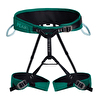The Rifugi of the Dolomites

 1 / 1
1 / 1 Planetmountain
Planetmountain
Although some were still snowed in, most Alpine refuges in the
Dolomite region opened on Saturday June 20, the eve of the summer
solstice and the start of the hiking season.
The rifugi as well as
offering hospitality to climbers, also protect the mountains and
guarantee the correct use of the Dolomites.
In 1972 the United Nations Educational Scientific and Cultural Organization (UNESCO) adopted an international treaty to identify and protect cultural and natural heritage. The mission to preserve heritage considered to have outstanding value to humanity is carried out by the World Heritage Committee, scheduled to rule on the Dolomite bid by the end of June. Italy's 2008 application to get its famous mountains a spot on the prestigious list was indorsed by the International Union for the Conservation of Nature (IUCN) in May.
Today there are about 130 main refuges in the Dolomites offering hospitality to thousands of excursionists. Together with smaller huts, this indispensable network of high-altitude refuges gives shelter and lodging to walkers, mountaineers, and skiers and plays an irreplaceable logistical role in all mountain activities and for the Mountain Rescue service (Soccorso Alpino). Safety is the managers' top concern. They advise on equipment and weather, they enquire about their guests' itineraries, and if excursionists don't return within a reasonable amount of time they send a search party or alert the emergency services.
''We also ask hikers where they're going to know if they'll be back that day or are thinking of spending the night in another refuge, so we know if we have to worry when they don't return'', said Klaus Happacher, the manager of the Zsigmondy-Comici refuge at the foot of the Croda dei Toni, in the Sesto Dolomites. The Dolomites refuges were started at the end of nineteenth century when European mountaineers first discovered the spectacular mountains but were often built as a way of staking nationalist claims.
The history of the Dolomites refugees, when the Trentino Alto Adige region was the border between the Austro-Hungarian Empire and the Kingdom of Italy, is filled with clashes between the Italian nationalist Irredentist movement - lobbying for the annexation of territories inhabited by Italian majorities - and Pan-Germanic movements. Disputes over place names, provocatively flying national flags on summits, and excursions that seemed more like reconnaissance operations frequently led to tensions in the period leading up to the First World War. The refuges clashed not so much as competing tourist structures but as signs of territorial occupation and control over mountain passes. The Association of Trento Alpinists built the Tosa refuge in the Brenta Dolomites in 1881 and the Groste' refuge in 1884.
In 1905 the Italians planned another refuge in the Brenta Dolomites, the Tuckett, but the Berlin branch of the Austro-German alpine club, the Deutscher und Oesterreichischer Alpenverein (DOAV) built a lodge a short distance away. After the Bremen branch of the DOAV built a refuge near the Italian Tosa lodge in 1910 a case brought before the Supreme Court in Vienna was decided in favour of the Trento association. The magazines published by Austro-German Alpine Clubs at the time clearly supported the ideological and economic commitment behind building Dolomites refuges. Branches all over Germany financed projects, not just for refugees but for paths and climbing routes as well, in an attempt to put their stamp on the mountains they persisted in calling German.
In 1894 there were 11 DOAV refuges in the Dolomites, by 1918 there
were 26. After the First World War they were all transferred to the
Italian Alpine Club. Mostly destroyed during the war, the refuges were
rebuilt - creating today's unique network and tradition of Dolomite
mountain lodges. The roads, paths and mule tracks used during the
fighting in the northern Italian range became a framework for the
development of Dolomite tourism, today attracting holiday makers from
around the world.
www.dolomitemountains.com



 Copia link
Copia link























